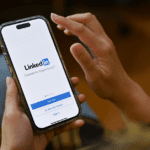I’m pretty sure how the first meetings went almost a decade ago:
“Well, we’re paying our affiliates 5% for referrals. If we pay charities a tenth of that and call it a donation, it’ll be great PR and we’ll also make a profit on every sale because we won’t need to pay a full commission…”
Amazon didn’t invent the online affiliate concept, but the company certainly turned it into a significant engine for growth. If a consumer bought a $100 item that someone in their program linked to, they would pay the referrer about $5. That meant they had little chance of actually turning a profit on that sale, but it led to millions of new customers, people who came back again and again. It also usually turned one sale into a few…
The end result is that Amazon has paid many billions of dollars in affiliate fees, and their affiliates (like Wirecutter, CoolTools, and formerly, Squidoo) sometimes built entire businesses around the simple idea that recommending a product and sending someone to the biggest online retailer to buy it could lead to income.
Smile turned more than a million non-profit charities into affiliates at a bargain rate. Now, that $100 purchase turned into forty cents sent to the cause of your choice.
I used to send you, my esteemed readers, to Smile links, but when I realized how little each donation was, I switched to geni.us, and so our donations went up 10x.
To date, Amazon Smile has sent charities more than $500,000,000. That’s not a ‘donation’ of course, it’s simply an allocation of marketing spend. And yet, half a billion dollars makes them a very significant donor in aggregate, one of the biggest corporate donors in the world.
So why cancel the program?
I have a few guesses:
- The new management at Amazon is aggressively streamlining programs and expenses to enable focus and increased profitability. Programs that involved a lot of people and time got harder to justify.
- They’ve always done a bad job of explaining the program, as evidenced by the fact that many people (including me) were surprised that the aggregate donation number was so big.
- Most charities aren’t very good affiliates. My guess is that few of the million recipients did much at all to persuade their donors to buy from the smile link that donated back to them.
- And perhaps most of all, as Amazon continues to dominate online retail, the affiliate program is probably less important strategically, and cutting costs on that front may seem like a simple way to increase short-term profit.
Western industrial culture has had a hard time thinking about charity all the way back to Community Chest and the United Way. If the ‘game’ is to maximize profit, then sending money to good causes seems to undermine that. Some people argue that companies have a corporate social responsibility, that the compact they sign with the community is to not simply take as much profit as possible but to invest for the long-term well-being of the places they work and the people they work with. Or, as may be the case here, it’s simply a marketing tool.






